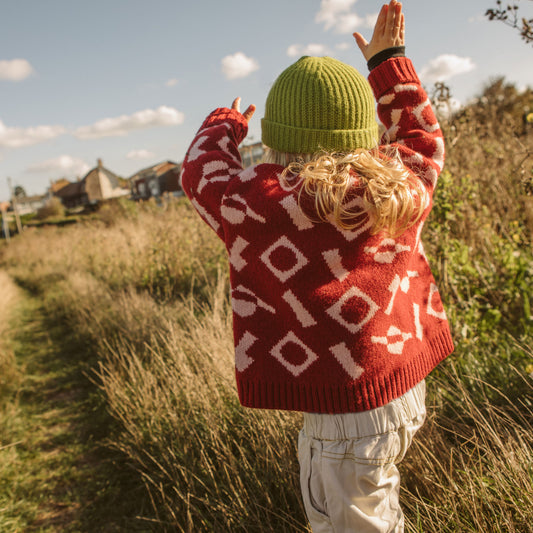Meet Tanya, Pharmacist and Founder of Dome.
Iron deficiency in women is more common than many of us realise—and it’s often easy to miss. Pharmacist and mum of two, Tanya Shukla, knows this all too well. Frustrated by supplements that were effective but not easy to tolerate, she founded Dome in 2022 to create wellness that’s effective and enjoyable.
With her background in pharmacy and personal experience managing iron through pregnancy and motherhood, Tanya leads Dome’s research and formulations, making sure every product is gentle on sensitive systems, lab-tested, and thoughtfully designed. In this chat, she shares how women can spot the signs of iron deficiency and what truly works to feel their best.

What causes iron deficiency in women?
Iron deficiency in women is primarily caused by a combination of blood loss, insufficient dietary intake, poor absorption, and increased physiological demands. The most common cause is menstrual blood loss, which can significantly deplete iron stores, especially in women with heavy periods. Inadequate intake of iron-rich foods, such as red meat, poultry, fish, beans, and leafy greens, also contributes—particularly in those following vegetarian or vegan diets where non-heme iron is less easily absorbed. Malabsorption conditions, including celiac disease, Crohn’s disease, or the use of antacids and proton pump inhibitors, can further reduce iron uptake from food. Additionally, pregnancy and breastfeeding increase iron requirements to support fetal growth and milk production. Finally, lifestyle and dietary habits such as frequent consumption of tea, coffee, or calcium-rich foods can inhibit iron absorption, compounding the risk of deficiency.
I know a lot of women suffer from low iron levels. Do you have an idea as to how many women may be iron deficient? Is it possible some women may be suffering without realising?
Yes — iron deficiency is very common among women worldwide, and many may indeed suffer from it without realising.
According to the World Health Organization (WHO), around 30–40% of women of reproductive age globally are affected by iron deficiency anemia, and even more have low iron stores without yet developing anemia. This means that roughly 1 in 3 women may have some level of iron deficiency.
Many women remain unaware because symptoms—like fatigue, weakness, dizziness, pale skin, headaches, or difficulty concentrating—can be easily mistaken for stress, overwork, or lack of sleep. Mild iron deficiency may not cause obvious symptoms but can still affect energy levels, cognitive function, and immune health.
Regular blood tests (especially checking hemoglobin and ferritin levels) are the best way to detect iron deficiency early, particularly for women with heavy periods, pregnancies, vegetarian diets, or ongoing fatigue.

What age are we most likely to suffer from iron deficiency?
Women are most likely to suffer from iron deficiency during their reproductive years, roughly between ages 15 and 50.
This is mainly because of menstrual blood loss, which increases iron requirements each month. Within this range, certain stages carry even higher risk:
-
Adolescence (teens to early 20s): Rapid growth, the onset of menstruation, and often poor dietary habits make iron deficiency common in teenage girls.
-
Childbearing years (20s to 40s): Regular menstruation, pregnancy, and breastfeeding significantly increase iron demand. Pregnant women, in particular, need almost double the usual amount of iron to support the developing baby and increased blood volume.
- Perimenopause (40s to early 50s): Heavy or irregular periods before menopause can continue to deplete iron stores.
After menopause, the risk typically decreases because menstrual blood loss stops—though poor diet, gastrointestinal issues, or chronic diseases can still cause iron deficiency in older women.
 Can you describe what symptoms are caused by low iron levels in women?
Can you describe what symptoms are caused by low iron levels in women?
Low iron levels in women can lead to a range of physical, cognitive, and emotional symptoms, which often develop gradually and may be overlooked. Common symptoms include:
-
Fatigue and weakness: Feeling unusually tired even after rest is one of the earliest and most common signs.
-
Paleness: Pale skin, especially on the face, inner eyelids, or nails, due to reduced red blood cells.
-
Shortness of breath and dizziness: Low oxygen-carrying capacity of blood can cause breathlessness or lightheadedness, especially during physical activity.
-
Heart palpitations: The heart may beat faster or irregularly to compensate for low oxygen delivery.
-
Cold hands and feet: Poor circulation can lead to feelings of coldness in extremities.
-
Brittle nails and hair loss: Iron deficiency affects cell growth, causing fragile nails and increased hair shedding.
-
Headaches and difficulty concentrating: Reduced oxygen delivery to the brain can cause cognitive issues, poor memory, or brain fog.
-
Restless legs syndrome: Some women experience an irresistible urge to move their legs, particularly at night.
-
Cravings for non-food items (pica): A rare symptom where individuals crave ice, dirt, or starch.
It’s important to note that mild iron deficiency may show very subtle or no symptoms, so many women may be affected without realizing it. Blood tests, particularly hemoglobin and ferritin, are essential for accurate diagnosis.

Finally, any advice for women who may be struggling with fatigue and low energy?
Absolutely. For women experiencing fatigue and low energy, it’s important to consider iron deficiency as a possible cause, but also to approach it holistically. Here’s practical advice:
-
Get tested: Ask a healthcare provider for blood tests including hemoglobin, ferritin, and iron levels to confirm if low iron is the issue. Self-diagnosing can be risky.
-
Boost dietary iron: Include both heme iron (from red meat, poultry, fish) and non-heme iron (from lentils, beans, spinach, tofu). Pair non-heme iron with vitamin C-rich foods (like citrus, peppers, or tomatoes) to improve absorption.
-
Limit absorption inhibitors during meals: Avoid tea, coffee, or high-calcium foods at the same time as iron-rich meals, as they can reduce iron uptake.
-
Consider supplements if needed: If dietary changes aren’t enough, iron supplements may be prescribed by a doctor. Taking them under guidance is important, as excess iron can be harmful.
-
Address lifestyle factors: Ensure adequate sleep, regular physical activity, and stress management, as these also affect energy levels.
- Monitor ongoing symptoms: Even mild fatigue should not be ignored. Persistent tiredness, pale skin, or hair loss can indicate underlying iron deficiency or other health issues.









